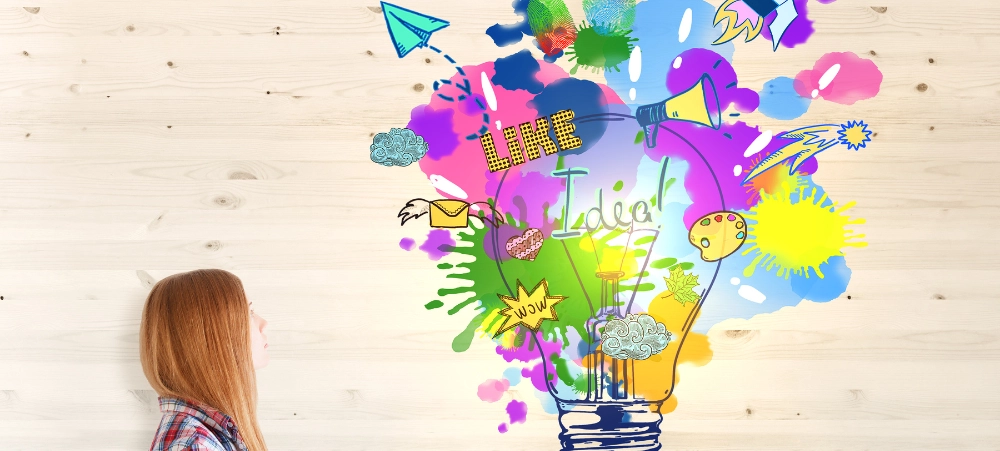Creativity is a vital skill that helps children solve problems, think outside the box, and express themselves in unique ways. Encouraging imagination from a young age not only makes childhood more fun but also lays the foundation for lifelong skills in innovation and critical thinking. If you’re looking for ways to inspire creativity in your child, here are some fun and practical tips to get started.
1. Provide Open-Ended Materials
One of the best ways to nurture creativity is by providing children with materials that encourage open-ended play. These could be art supplies like paper, crayons, markers, and paint, or even building materials like blocks and Legos. According to Child Development Institute, these types of materials let kids use their imagination to create anything they can dream up, without the constraints of instructions or predefined results.
2. Encourage Pretend Play
Pretend play, also known as imaginative play, allows kids to step into different roles and create entire worlds. Whether they’re playing house, pretending to be superheroes, or imagining they are pirates, pretend play promotes creativity and cognitive development. Experts from Zero to Three highlight that imaginative play helps children develop social skills, emotional understanding, and problem-solving abilities.
Set up a space where your kids can engage in pretend play. You don’t need elaborate toys—simple costumes or everyday household items like kitchen utensils can spark hours of creative fun.
3. Introduce New Experiences
Expose your children to different environments and activities to spark their imagination. Visiting a museum, going on a nature walk, or trying out a cooking class can provide new stimuli that encourage creative thinking. PBS Kids points out that when children are introduced to new experiences, they have a chance to see things from different perspectives, which fuels their creativity.
4. Limit Screen Time
While digital games and shows can offer entertainment, they often don’t engage children’s imaginations as much as other activities do. The American Academy of Paediatrics suggests limiting screen time for younger children and encouraging more hands-on, physical activities like drawing, dancing, and playing outside. When kids are engaged in these activities, they’re more likely to use their imagination to invent and explore new ideas.
5. Foster a Growth Mindset
Teaching children that creativity isn’t about being perfect but about trying new things and learning from mistakes is key. A growth mindset, as advocated by Carol Dweck in her book “Mindset: The New Psychology of Success,” helps children understand that abilities can be developed with effort and persistence. Encourage your child to experiment without fear of failure. Praise their effort and process rather than just the outcome.
6. Collaborative Creative Projects
Working together on a creative project is a great way to nurture teamwork and expand imaginative boundaries. Whether it’s creating a family art piece, writing a short play, or working on a science project, collaborating encourages kids to listen to others’ ideas, build on them, and think creatively as a group. As noted in Psychology Today, collaboration not only boosts creativity but also teaches valuable social and communication skills.
7. Allow for Unstructured Time
Children often come up with their best creative ideas during free, unstructured play. Instead of filling every moment with planned activities, give your child some “downtime” where they can explore their own ideas. The National Association for the Education of Young Children (NAEYC) suggests that giving children unstructured time to explore and daydream is essential for fostering creativity, as it lets them become independent thinkers.
8. Encourage Storytelling and Writing
Encourage your children to tell stories or write their own books. These can be fictional tales, retellings of their day, or even comic strips. Storytelling fosters creativity by helping kids learn to organise their thoughts, develop characters, and think critically about plot-lines. You can also join in, creating stories together, which strengthens their imagination while building their narrative skills.
9. Give them Freedom to Experiment
Whether it’s mixing colours, trying out new ways to play an instrument, or experimenting with different materials, encourage your child to experiment without worrying about perfection. As Edutopia explains, experimentation leads to “happy accidents” that often result in innovative ideas and solutions. Allowing children to follow their curiosity leads them to explore new possibilities and come up with fresh, imaginative ideas.
10. Expose Them to Creative Role Models
Introduce your kids to creative individuals who have used their talents to make an impact. This could be artists, inventors, writers, or entrepreneurs who followed their passions. Watching documentaries, reading biographies, or listening to interviews can inspire your child to think big and act creatively. As noted by Parents Magazine, seeing others push boundaries helps children understand that creativity has a real-world impact.
Conclusion
Fostering creativity in kids doesn’t require special tools or vast amounts of time; it’s about offering opportunities to explore, experiment, and express themselves. With the right mix of freedom, support, and encouragement, you can help your child unlock their full creative potential. These habits, when practiced regularly, can become lifelong skills that help them solve problems, innovate, and approach life with a sense of imagination and curiosity.
Sources:
- Child Development Institute, “Encouraging Creativity in Children”
- Zero to Three, “The Importance of Pretend Play”
- PBS Kids, “Creative Activities for Kids”
- The American Academy of Pediatrics, “Screen Time and Children”
- Psychology Today, “The Power of Collaborative Creativity”
We understand that there are many aspects that encompass a Mother, Father or Child and strive toward providing resources and services that accommodates this.
Our content is aimed to inform and educate families on issues starting from pregnancy through to the challenges of the teen-age years.
- Tips for Breastfeeding in Public: Confidence and Comfort - November 20, 2025
- Eskort launches Kiddos: South Africa’s first pork range made just for kids - November 13, 2025
- Putting the Power of Learning in Learners’ Hands During Global Education Week - November 12, 2025





